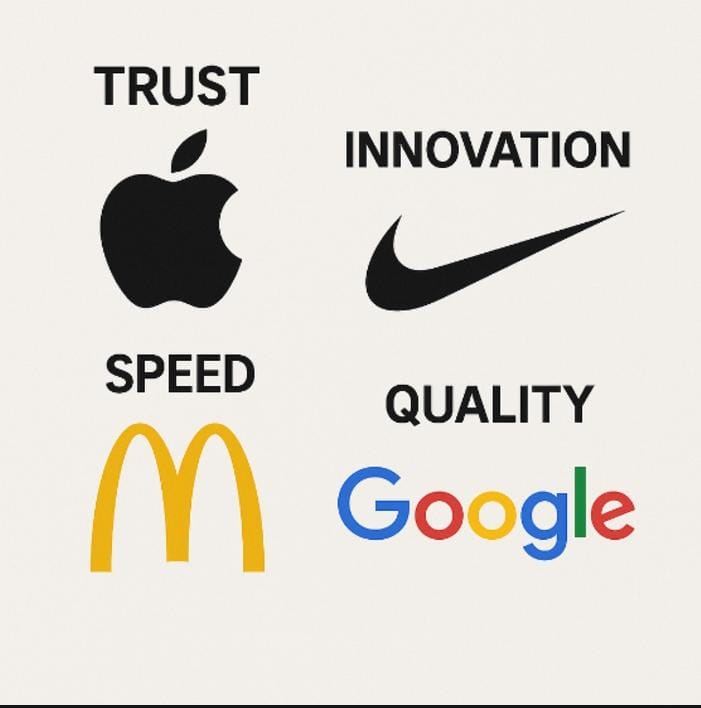The Power of Brand Storytelling: How to Create an Engaging Narrative

In today’s highly competitive digital landscape, brands that thrive aren’t just selling products or services—they’re telling powerful, engaging stories. Brand storytelling is the art of weaving a narrative that resonates with your audience, creates emotional connections, and builds lasting brand loyalty.
Why Brand Storytelling Matters
Stories are deeply ingrained in human nature. Since ancient times, people have connected through storytelling, making it a powerful tool for brands. Here’s why it’s essential:
Creates Emotional Connections
People don’t just buy products—they buy feelings, experiences, and aspirations. A strong brand story helps customers relate to your brand personally. It fosters a sense of belonging and connection that transactional marketing cannot achieve.
Builds Trust and Loyalty
Trust is the foundation of any successful brand. Consumers are more likely to engage with a brand that shares authentic, relatable stories rather than one that simply pushes advertisements. A compelling brand narrative makes your audience feel valued, building long-term loyalty.
Differentiates Your Brand from Competitors
In a crowded marketplace, products and services often seem similar. However, a unique brand story sets you apart, making your company more memorable and appealing.
Boosts Engagement and Sales
Engaging brand narratives not only capture attention but also inspire action. Whether it’s making a purchase, sharing content, or becoming a brand advocate, storytelling has a direct impact on consumer behavior.
How to Create an Engaging Brand Narrative
Crafting a compelling brand story requires more than just words—it requires strategy, authenticity, and alignment with your audience’s values. Follow these steps to build a strong brand narrative:
1. Define Your Core Brand Message
Your brand story should align with your company’s mission, vision, and values. Ask yourself:
- What is the purpose behind your brand?
- What problem do you solve for your customers?
- What makes your brand unique?
For example, Tesla’s core message is about sustainability, innovation, and a future driven by clean energy. Every story they tell aligns with this vision.
2. Understand Your Audience
A great brand story speaks directly to the needs, emotions, and aspirations of your audience. Define your target audience by asking:
- Who are they?
- What challenges do they face?
- How can your brand improve their lives?
By addressing these questions, you can craft a customer-centric story that makes them feel seen and valued.
3. Follow the Classic Storytelling Framework
The best brand stories follow a proven storytelling structure that keeps audiences engaged:
- The Hero (Your Customer) – Your customer is the protagonist, not your brand.
- The Challenge – Identify their problem or pain point.
- The Guide (Your Brand) – Present your brand as the mentor offering a solution.
- The Transformation – Show how your brand improves their life.
For instance, Nike’s storytelling is always about athletes overcoming challenges. Their message isn’t just about selling shoes—it’s about empowering people to push beyond their limits.
4. Keep It Authentic and Relatable
Consumers can tell when a story is forced or insincere. Authenticity is key—your brand’s story should reflect real experiences, genuine values, and a consistent voice.
For example, Airbnb’s storytelling focuses on belonging and human connections, often sharing real stories from travelers and hosts. This builds trust and relatability with their audience.
5. Leverage Multiple Formats
A brand story can be told in various ways:
- Website & About Us Page – Tell your origin story and brand mission.
- Social Media & Videos – Share behind-the-scenes moments, customer testimonials, and short brand narratives.
- Blogs & Case Studies – Showcase real success stories of customers who benefited from your brand.
- Advertising Campaigns – Create emotional, visually compelling ads that tell a meaningful story.
The key is consistency—your narrative should remain the same across all platforms.
6. Make Your Customer the Hero
Many brands make the mistake of centering their story around themselves. Instead, focus on how your brand helps customers achieve success.
For example, Coca-Cola doesn’t just sell beverages; they sell happiness and togetherness. Their ads focus on people enjoying special moments with Coca-Cola in hand, rather than just the product itself.
Examples of Great Brand Storytelling
Here are some brands that have mastered storytelling:
Nike – "Just Do It"
Nike’s marketing goes beyond shoes and apparel. They tell inspirational stories of athletes, overcoming obstacles, and pushing limits. Their ads evoke emotions of perseverance and determination, making customers feel empowered.
Apple – "Think Different"
Apple’s brand story revolves around innovation, creativity, and challenging the status quo. They position their customers as visionaries, reinforcing that Apple products enable them to change the world.
Airbnb – "Belong Anywhere"
Airbnb’s marketing focuses on real stories of travelers and hosts, reinforcing the idea that their platform isn’t just about booking a place—it’s about experiencing new cultures and creating meaningful connections.
Final Thoughts
Brand storytelling is one of the most powerful ways to build emotional connections, foster trust, and drive engagement. It’s not just about what you sell—it’s about the impact you create.
Latest Blogs

The power of logos: more than just a pretty picture

Why email marketing automation is a game- changer for businesses in 2025

Web design evolved: the impact of artificial intelligence

Why Responsive Web Design is Crucial for Your Business

PRODUCT REVIEWS: A POWERFUL TOOL FOR INFORMED DECISION- MAKING